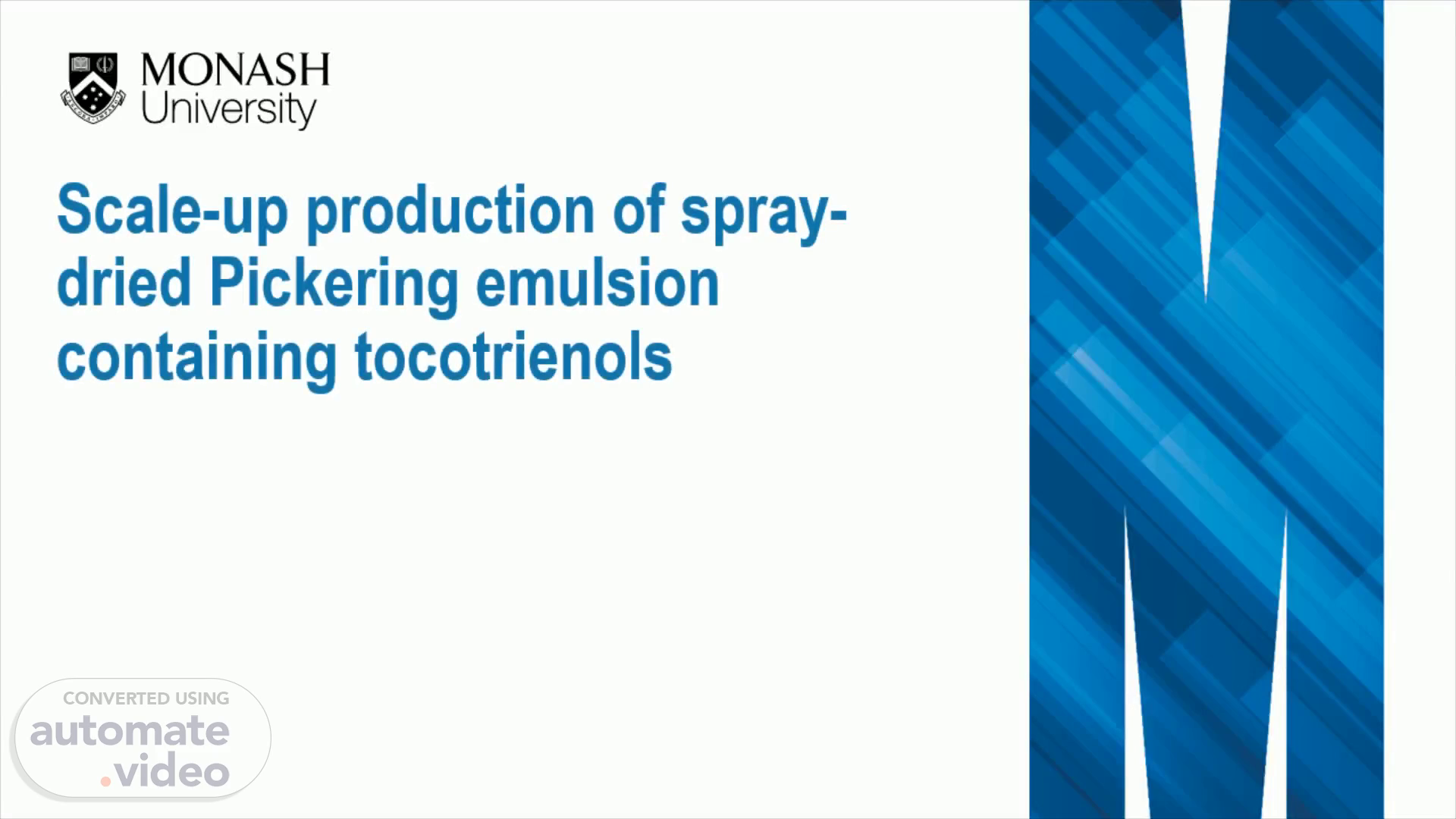
PowerPoint Presentation
Scene 1 (0s)
[Audio] This research project was funded by the Ministry of Higher Education under the Prototype Research Grant Scheme..
Scene 2 (19s)
[Audio] Tocotrienols which can be found abundantly in palm oil, are superior antioxidants that can help to protect the brain and heart cells. This is a function lacking in the tocopherols. The key difference lies in the tail region of the tocotrienols molecules, whereby they have an unsaturated sidechain with 3 double bonds, which shorten the molecule for greater flexibility in the cell membrane. Due to their chemical structure, tocotrienols are highly hydrophobic and have low chemical stability, which results in their poor oral bioavailability. Therefore, a delivery system that can efficiently encapsulate, protect, and orally deliver the tocotrienols is needed..
Scene 3 (1m 3s)
[Audio] Emulsion-based delivery systems have been used to protect tocotrienols from external environments. However, the use of surfactants has been facing increasing resistance. Besides, the emulsion in liquid form is difficult to handle and has limited applications..
Scene 4 (1m 25s)
[Audio] Recently, Pickering emulsion, an emulsion stabilized by solid particles, has received lots of research interest. Its surfactant-free characteristic makes it favorable for food applications. Several food-grade solid particles, such as chitosan, calcium carbonate, and cellulose nanocrystals, have been studied as Pickering emulsifiers. The solid particles adsorb at the oil-water interface to form a rigid and robust layer around the oil phase. As a result, the Pickering emulsion has excellent stability against coalescence and could provide better protection against lipid oxidation. Besides, choosing the right particle could offer additional functionalities for wider applications..
Scene 5 (2m 51s)
[Audio] In this project, we aimed to perform a pilot-scale production of the spray-dried Pickering emulsion powder containing tocotrienols. Firstly, the pilot-scale preparation of the tocotrienols-loaded Pickering emulsion was carried out, followed by a spray drying the emulsion using a counter-current pilot-scale spray dryer. The spray drying yield, properties and stability of the pilot-scale spray-dried powders were also validated..
Scene 6 (3m 20s)
[Audio] For results, five liters of the mucoadhesive Pickering emulsion were successfully prepared and the emulsion droplet size ranged between 10 to 50 microns. The preliminary spray drying yield was about 41%. Upon process optimization, the process yield improved to about 92% based on the average of 3 distinct runs. The tocols content in the powders was about 20wt%, meeting the industrial specification. The physical characteristics of the produced powder were comparable to those produced using a lab-scale spray dryer. The powder particle size ranged from 10 to 20 microns in diameter and was generally spherical in shape. The powder showed excellent physical stability with moisture content around 5 wt% and acceptable hygroscopicity across 8-week storage period. Our powder also showed a notable 4 to 6-fold of improvement in tocols stability as compared to the literature..
Scene 7 (5m 8s)
[Audio] We have successfully filed a patent for the formulation, and relatable work has been published as full-length research papers in several high-impact journals. The technology is available for licensing. For interested parties, please email Prof. Chan Eng Seng for enquiries..
Scene 8 (5m 29s)
THANK YOU.